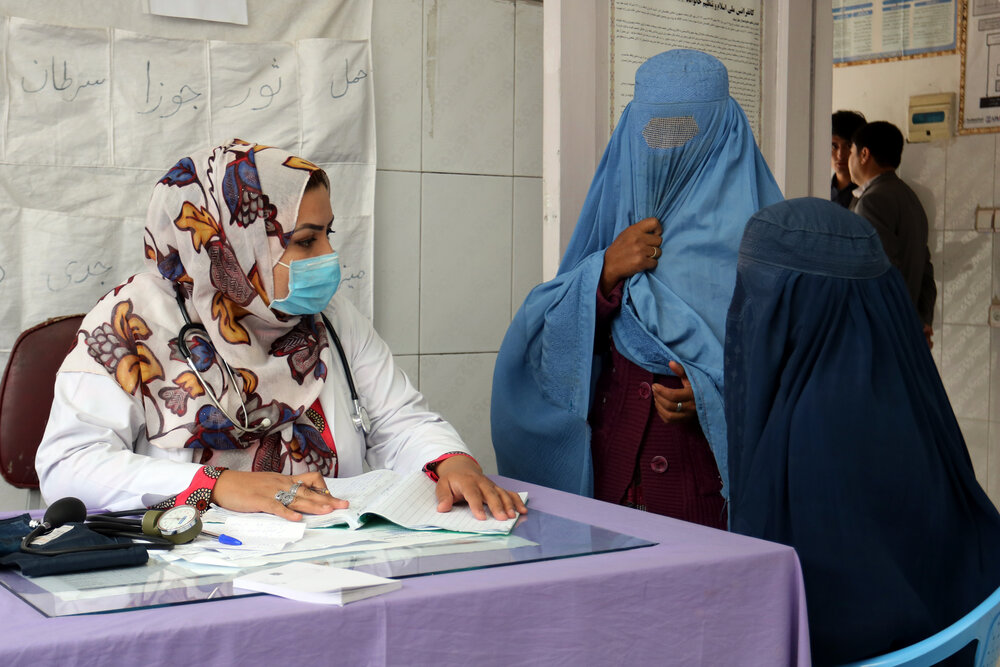
The Sehatmandi (Health) Project implemented by the Ministry of Public Health (MoPH) aims to increase the utilization and quality of health, nutrition, and family planning services across Afghanistan. The Sehatmandi project is jointly supported by an ARTF grant of $425 million, International Development Association grant of $140 million, and Global Financing Facility grant of $35 million. It seeks to improve delivery of basic health services and essential hospital services; strengthen the health system and its performance; and boost demand and community accountability for key health services. It has approved funding from March 18, 2018, to June 30, 2021.
Challenges
DESPITE SIGNIFICANT PROGRESS in the coverage and quality of health services, as well as a drop in maternal, infant, and under-five mortality, Afghanistan health indicators are still worse than the average for low-income countries, indicating a need to further decrease barriers for women in accessing services.
Afghanistan also has one of the highest levels of child malnutrition in the world. About 36.6 percent of children under five suffer from chronic malnutrition, and both women and children suffer from high levels of vitamin and mineral deficiencies.
Approach
GIVEN THE POLITICAL, security and financial uncertainties, it was deemed necessary to have one source of financing for the health sector, and all development partners to move toward a programmatic or sectoral approach. Such a sectoral approach would make Sehatmandi more responsive to the medium/longer-term needs of the sector and enable financing for sectoral priorities to be better planned through a well-coordinated effort by the government and development partners. The joint support to the health sector also will help harmonize donor support and align it with key priorities of the country.
“Previously, people had no idea what a vaccine was and what its purpose was because access to vaccines was limited and health education was rudimentary at best.”
— a vaccinator at the Tupchi Sub-Health Center, Bamyan province, on the importance of health education
Results
Child mortality rate: Under-five mortality rate dropped from 191 to 50 per 1,000 live births from 2006 to 2018, and newborn mortality rate fell from 53 to 23 per 1,000 live births from 2003 to 2018.
Health facilities: The number of functioning health facilities increased from 496 in 2002 to over 2,800 in 2018, while the proportion of facilities with female staff increased in the same period.
Attended births: Births attended by skilled health personnel among the lowest income quintile increased to 58.8 percent from 14.9 percent.
Immunization: PENTA 3 immunization coverage (a combination of five vaccines in one covering polio, diphtheria, Pertussis, tetanus, haemophilus influenzae type b, and hepatitis B) doubled, from 29 percent to 61 percent among children age 12 to 23 months in the lowest income quintile.
Contraception: Contraceptive prevalence rate (using any modern method) increased from 5.3 percent to 17.4 percent between 2000 and 2018.
“People in this province are very poor, but they have increased their knowledge about health related issues and changed their habits accordingly.”
— a midwife at the Tupchi Sub-Health Center, Bamyan province
Government Health Care Reforms Show Results in Bamyan Province
Women and children approach Tupchi Sub-Health Center on the outskirts of Bamyan city as it opens for another busy day. One of the first patients to arrive is Ziagul Muradi, 20, a homemaker from Tupchi village. She has brought her 11-month-old son, Mahdi, to be vaccinated against measles.
As a new mother, she appreciates the services of the village clinic and visits often. “I need to get a doctor’s opinion about my child’s health,” Jabeen (name changed) says, confident in the care she will receive because “the doctors here are very professional and have access to good medicine.”
Located 12 km from Bamyan city center, the Tupchi Sub-Health Center serves between 1,400 and 1,800 patients a month, mainly children under five and women. Reforms at the center, begun in 2013 by MoPH under the System Enhancement for Health Action in Transition program, have improved overall quality of care by improving access to medicine; building staff capacity; ensuring cleaner and safer facilities; and making health information more accessible to patients.
Health Awareness Leads to Good Outcomes
Under Sehatmandi, the Sub-Health Center carries out health campaigns to educate local communities on health issues. “Previously, people had no idea what a vaccine was and what its purpose was because access to vaccines was limited and health education was rudimentary at best,” says a vaccinator at the center. His work is especially important to him because two children in his family had died from measles.
Outreach staff also go to neighboring villages to provide health education, generating interest in health care, which has resulted in higher rates of vaccination in the area. With Sehatmandi support, 10 types of vaccines are offered and many children and women receive vaccinations against diseases such as tuberculosis, polio, diphtheria, tetanus, and measles.
At the same time, staff combat the circulation of false information and promote correct facts on health care. A 37 year old midwife at the Tupchi Sub-Health Center, says that unattended home births have decreased as a result of recommendations on prenatal care, information on dangerous symptoms, family planning, and benefits of delivering at a health facility. “Residents have themselves planning, and benefits of delivering at a health facility. “Residents have themselves decided to deliver at a health care facility,” she says.
Unhealthy, traditional postnatal practices have stopped since mothers were educated on breastfeeding and proper nutrition. “People in this province are very poor, but they have increased their knowledge about health-related issues and changed their habits accordingly,” she says. According to her, reported cases of severe anemia, malnutrition, and night blindness, which once affected 80 percent of women in the area, have largely fallen.